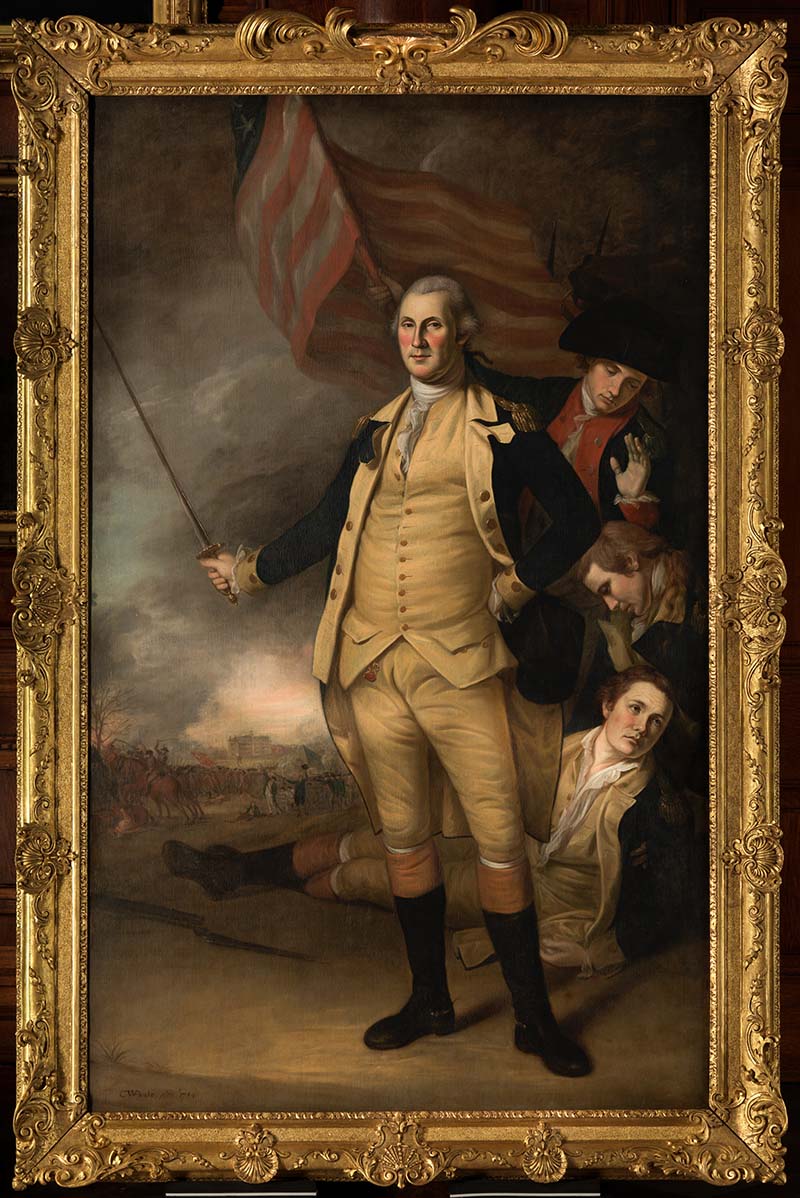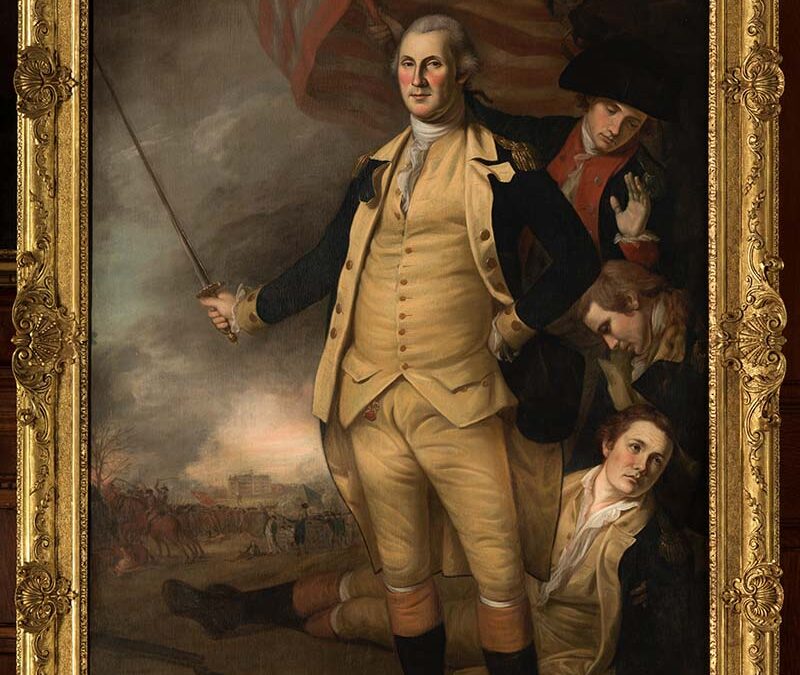Frame

| Maker | René Stone |
| Date of Creation | c. 1760 |
| Location | London, England; Used in New Jersey |
| Materials | Gilded sugar pine |
| Institution | Princeton University |
| Credit Line | N/A |
| Accession Number | PP222 |
| Photo Credit | Bruce M. White |
The ornate frame surrounding Charles Willson Peale’s iconic portrait of George Washington at the Battle of Princeton (1783–84) represents an extraordinary act of Revolutionary recycling. Attributed to British framemaker René Stone, the frame arrived in New Jersey about 1760 enclosing a portrait of King George II by official portraitist John Shackleton, one of several such images circulated in the colonies to bolster royal authority. Installed in Nassau Hall at the fledgling College of New Jersey (now Princeton University), the frame survived the pivotal Battle of Princeton on January 3, 1777, which culminated with the surrender of the British then occupying the building following an artillery bombardment led by Alexander Hamilton. Shackleton’s portrait fared less well: it was destroyed by cannonshot that, according one witness, “took off the king’s head.” General George Washington had particularly distinguished himself for bravery during the battle, and six years later, during his residency outside Princeton while the town served briefly as the nation’s capital, the trustees of the college commissioned Peale’s portrait to acknowledge his service. Peale himself fought at the Battle of Princeton, and he produced a grand painting of Washington in action, sized intentionally to fit Stone’s salvaged frame. Only a single change was necessary before Washington’s portrait was fitted into it: the removal of a carved crown originally located between the palm fronds on the frame’s top rail—an apt metaphor for the replacement of the monarchical sovereignty of the British George with the republican authority of the American one.

